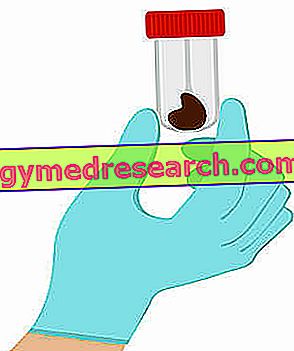The complex system rennin-angiotensin presides over the regulation of arterial pressure, that is of the force exerted by the blood on the walls of the arteries, from which the adequate perfusion of blood depends on all the body districts; this pressure is influenced, among other things, by the amount of blood that the heart pushes when it pumps, by its force of contraction and by the resistances that oppose the free flow of the blood stream. Well, the renin-angiotensin system acts on the one hand by increasing the volume of the blood (through the stimulus on synthesis and release of aldosterone from the adrenal cortex), and on the other by inducing vasoconstriction.
Vasoconstriction - that is, the decrease in blood vessel lumen - induced by the renin-angiotensin system, significantly increases blood pressure. We notice this phenomenon when watering the garden with a rubber tube reduces the caliber with the fingers to increase the distance reached by the water jet. Equally intuitive is the fact that this, and with it the water pressure, increases and decreases as we open or close the tap, respectively. The same effect is induced by aldosterone, a hormone synthesized by the adrenal cortex under the stimulus of the renin-angiotensin system. The aldosterone acts in fact on the distal part of the nephrons (functional units of the kidney), where it determines a decrease in the excretion of sodium and water, and an increase in the excretion of potassium and hydrogen ions. Sodium and water retention by the kidney increases plasma volume and blood pressure, just like in the example of water and tap.
The primary control center of the renin-angiotensin system is located in the kidney, and more precisely in the cells of the juxtaglomerular apparatus, where the proteolytic hormone renin is produced and stored. Its biological effect leads it to act on a plasma protein synthesized by the liver, called angiotensinogen, transforming it into the angiotensin I decapeptide. This blood protein is in turn transformed by a conversion enzyme (the so-called ACE, an acronym for Angiotensin Converting Enzyme ) into the 'octapeptide angiotensin II, which undergoes further enzymatic lysis to transform itself into angiotensin III and other metabolites, such as angiotensin IV and angiotensin 1.7.
Angiotensin III, to a lesser extent angiotensin I, and in particular angiotensin II (which is the most potent vasoconstrictor in our body), is responsible for the aforementioned biological effects of the renin-angiotensin system, which they perform through interaction with specific receptors (AT1 and AT2). Among the two, the most represented are the AT1s, which when stimulated by the ligand:
- they favor the contraction of the smooth muscle of the arterioles and the striated muscle of the myocardium (positive inotropic effect).
- stimulate the thirst center and the production of aldosterone, favoring the reabsorption of sodium and increasing the volume (which also increase directly acting at the level of the renal tubule, with an action similar to aldosterone and ADH).
AT2 receptors are more represented in fetal tissues, progressively decreasing in the newborn and despite having an uncertain effect they seem to play a role in tissue development.
The renin-angiotensin system is then activated whenever conditions that lead to a noticeable drop in blood pressure, such as trauma with blood loss, occur in an acute way. The half-life of renin - which is degraded in the liver - is in fact short, in the order of 10-20 minutes; the same is true for angiotensin II, which is rapidly destroyed in the peripheral capillary beds by numerous enzymes called angiotensinases. Angiotensinogen, by contrast, is normally present at high levels in plasma and has a prolonged half-life.

Drugs active on the renin-angiotensin system
Angiotensin II receptor antagonists
- Losartan
- Telmisartan
- Irbesartan
- Olmesartan
- Valsartan
ACE Inhibitors
- Benazepril (Cibacen®)
- Captopril (Lopirin®, Tensobon®, many generics)
- Cilazapril (Dynorm®)
- Enalapril (Xanef®, Pres®, many generics)
- Fosinopril (Fosinorm®, Dynacil®)
- Imidapril (Tanatril®)
- Lisinopril (Acerbon®, Coric®, generic)
- Moexipril (Fempress®)
- Perindopril (Coversum®, Preterax®, generic)
- Quinapril (Accupro®, generic)
- Ramipril (Delix®, Vesdil®, Triatec®, generic)
- Spirapril (Quadropril®)
- Trandolapril (Gopten®, Udrik®)
Regulation of the renin angiotensin system "



